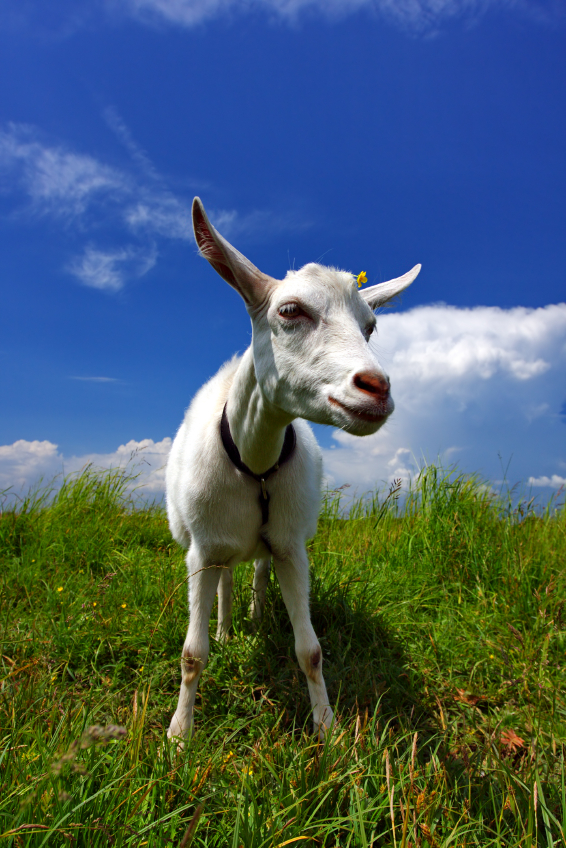Send your question to Umbra!
Q. Dear Umbra,
Google is replacing lawn mowers with goats. I’ve seen commenters make some interesting points (What is the impact of raising the goats? Transporting the goats? Watching goat poo run off into the Bay?). So what gives: is this a good idea? Is there a better one, like eliminating all that grass in the first place?
Christopher M.
Vermont
A. Dearest Christopher,
 It’s a great idea. You tell me: would you rather look out your office window at a riding lawn mower or at a herd of goats? And which would you rather hear as you lounge over breakfast on Saturday, baaaaa or rrrrummmmrrr? Not that visual and aural preference should dictate environmental actions. There are other good reasons to use goats for mowing.
It’s a great idea. You tell me: would you rather look out your office window at a riding lawn mower or at a herd of goats? And which would you rather hear as you lounge over breakfast on Saturday, baaaaa or rrrrummmmrrr? Not that visual and aural preference should dictate environmental actions. There are other good reasons to use goats for mowing.
The first and most significant is that gas-powered lawn mowers are polluting monsters. Mow for an hour or drive your car for four hours: the emissions are equal. Mowers have been largely unregulated with few emissions controls, although all that will change as of 2012, when new emissions standards for small spark-ignition engines take effect. The new rules will hopefully provide a 35 percent reduction in hydrocarbon emissions, lower evaporative emissions, and hence less ozone and greenhouse gas formation as a result of all that grass cutting.
Goats are ruminants, and emit methane as part of the enteric fermentation that occurs in their first “stomach,” the rumen. In 2003, according to the EPA, U.S. goats emitted 0.3 Teragrams CO2 equivalent of methane emissions. By comparison, landfills emitted 131.2 Tg, termites about 20 Tg, and mobile sources 2.7 Tg. Goats are not blameless, but they are better than lawn mowers. And termites!
Lawn mowing is perhaps the wrong image. Goats would keep a lawn short, yes, but they also love all those plants we don’t want — and Google appears to be using them not on a lawn, but in weedy fields. Goats easily and happily eat a huge variety of invasive and noxious plants down to the nub. They are browsers, not grazers, and have a famously catholic diet. Blackberry and poison ivy are just two examples of plants unwanted by humans and munched by goats.
Google is not the first to prefer goats over machines: Many goat herders are renting out their goats for landscape renovation and maintenance. Goat herds are used to maintain areas alongside airplane runways, to remove scrub in fire-prone areas, and to replace pesticides in weed eradication on ranches. They do all this and more without the impact of heavy equipment or the fallout from effective, deadly herbicides. Their byproducts provide fertilizer, their hooves stomp it in, all this while Heidi yodels your favorite tunes. What is not to love.
Rent goats for your own landscape if you wish, but don’t start raising goats at home until you’ve done some serious research.
Advisorily,
Umbra




